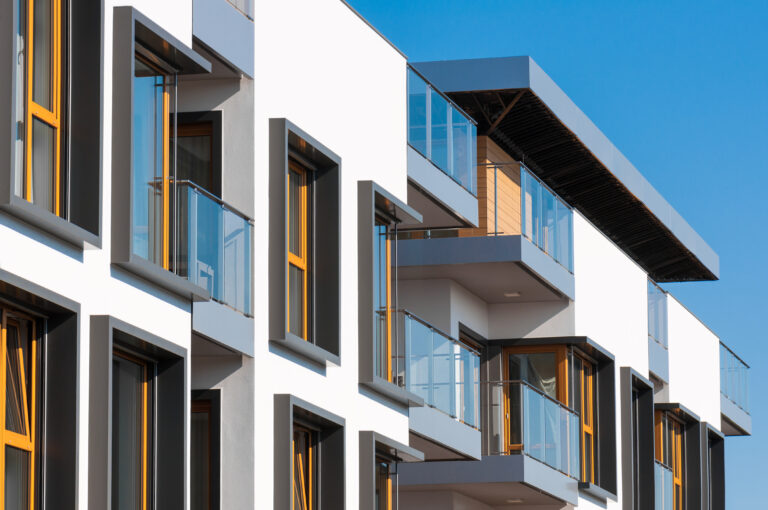Investing in new-build property can be an effective way of future-proofing your asset, and the savings to be made on energy bills are a huge benefit right now.
There has always been a significant disparity between energy bills in highly efficient homes and those with very poor energy efficiency. However, since wholesale prices began to increase rapidly back in 2021, saving money on utility bills has been at the forefront of many people’s minds.
In the UK housing market, the average energy performance certificate (EPC) rating is D, with ratings ranging from A (the most efficient) to G (the least efficient). Many households have been upgrading their properties to boost their EPC ratings over the past couple of years.
However, the most energy efficient properties available in the UK housing market tend to be new-build homes, with 85% of all new-builds achieving a rating of A or B in the year to March 2023, compared with just 4% of existing properties, according to Home Builders Federation.
Landlords can gain from investing in new-build
It certainly isn’t just homeowners who are keen to prioritise energy efficiency, as numerous studies have found that tenants are increasingly looking at EPC ratings of rental homes, and discounting homes where the ratings are too low. Arguably, the cost of living crisis and the price of energy bills can hit tenants even harder.
For example, Rightmove’s The Greener Homes Report found that one in five renters now list energy efficiency as a ‘must have’ when looking for a new home. This also means that many property investors and landlords have been keen to market higher EPC ratings in order to make their homes more desirable.
A separate study from Rightmove of more than 14,000 people found that the biggest motivator for owning or living in a ‘green’ home was to reduce energy bills, while 87% of renters said they believe more action should be taken to help people make their homes greener.
How much money can a new-build save?
Living in a new-build can save thousands of pounds in energy bills every year compared with the lowest rated property of the same size. Particularly as many tenants struggle to save up a deposit to get onto the property ladder, these savings could make a big difference.
Rightmove has released new research looking at just how much can be saved per property, factoring in the latest energy price cap for April-June 2024, and energy consumption data from the EPCs of all homes for sale on Rightmove in May 2024.
For example, a one-bedroom flat with an EPC rating of A would have average annual energy bills of £580. At the other end of the scale, a property rated G could create bills of an average of £3,500 per year – a huge difference of £2,920.
Average bills on a two-bed flat within an A-rating on its EPC come to £552 per year, says Rightmove, but this rises to £4,332 annually for a G-rated property.
While the research doesn’t focus on the age of the property specifically, as mentioned above, new-build homes largely fall into the top A or B rating brackets, so these are the average energy bills that can be expected from these properties.
| Property type | EPC rating A | EPC rating B | EPC rating C | EPC rating D | EPC rating E | EPC rating F | EPC rating G |
|---|---|---|---|---|---|---|---|
| 1-bed flat | £580 | £847 | £1,214 | £1,708 | £2,230 | £2,918 | £3,500 |
| 2-bed flat | £552 | £950 | £1,352 | £1,957 | £2,705 | £3,587 | £4,332 |
| 3-bed terraced house | £493 | £1,054 | £1,641 | £2,299 | £3,162 | £4,198 | £5,215 |
| 3-bed semi-detached house | £517 | £1,003 | £1,651 | £2,307 | £3,215 | £4,286 | £5,347 |
| 3-bed detached house | £508 | £1,081 | £1,764 | £2,477 | £3,557 | £4,726 | £6,428 |
| 4-bed semi-detached house | £599 | £1,208 | £2,043 | £2,930 | £4,093 | £5,641 | £7,517 |
| 4-bed detached house | £625 | £1,302 | £2,190 | £3,039 | £4,357 | £5,824 | £7,950 |
| 5-bed detached house | £809 | £1,763 | £2,857 | £3,986 | £5,570 | £7,536 | £10,121 |
18 million homes need to be improved
Rightmove’s research focuses on the fact that a huge 18 million homes in the UK fall short when it comes to energy efficiency. While the stream of new-build stock does achieve considerably higher standards, there is also a drive for existing properties to be upgraded, and Rightmove believes this should be a focus for the next government.
Tim Bannister, Rightmove’s property expert, says: “While it’s a start to see some green support proposed in the party manifestos, there’s a big job to be done to address the widescale issue that at least 18 million UK homes need to be improved.
“Many homeowners and landlords need urgent access to schemes that enable them to make these improvements, which could help with huge savings on energy bills. Each home requires different improvements and the upfront costs are a huge barrier to change.
“Without more help, many homeowners and tenants will continue to live in high-carbon emitting homes with high energy costs.”
Nathan Emerson, CEO of Propertymark, comments: “Propertymark have long supported initiatives and practical measures to help enhance energy efficiency across the UK. We would be keen to see any incoming government construct a wide-ranging package of support to assist with upgrades at the first opportunity.
“It’s vital there is a diverse approach of funding, grants, and targeted schemes based on age, condition, and size and that there is robust infrastructure in place to deliver on such ambitions.”
If you’re a property investor looking for a new-build opportunity in one of the UK’s top-performing locations, including off-plan new-build options, get in touch with BuyAssociation today.










